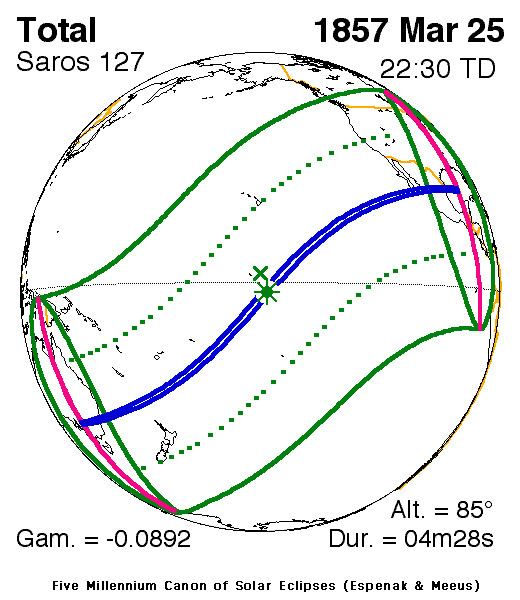Nature Total Magnitude 1.0534 Max. width of band 177 km (110 mi) Start date March 25, 1857 | Gamma -0.0892 Duration 268 sec (4 m 28 s) Greatest eclipse 22:29:38 | |
 | ||
A total solar eclipse occurred on March 25, 1857. A solar eclipse occurs when the Moon passes between Earth and the Sun, thereby totally or partly obscuring the image of the Sun for a viewer on Earth. A total solar eclipse occurs when the Moon's apparent diameter is larger than the Sun's, blocking all direct sunlight, turning day into darkness. Totality occurs in a narrow path across Earth's surface, with the partial solar eclipse visible over a surrounding region thousands of kilometres wide. Totality began at sunrise over southeastern Australia on March 26, crossing the Pacific ocean, and ended near sunset across Mexico on March 25.
Saros series 127
It is a part of Saros cycle 127, repeating every 18 years, 11 days, containing 82 events. The series started with partial solar eclipse on October 10, 991 AD. It contains total eclipses from May 14, 1352 through August 15, 2091. The series ends at member 82 as a partial eclipse on March 21, 2452. The longest duration of totality was 5 minutes, 40 seconds on August 30, 1532.
